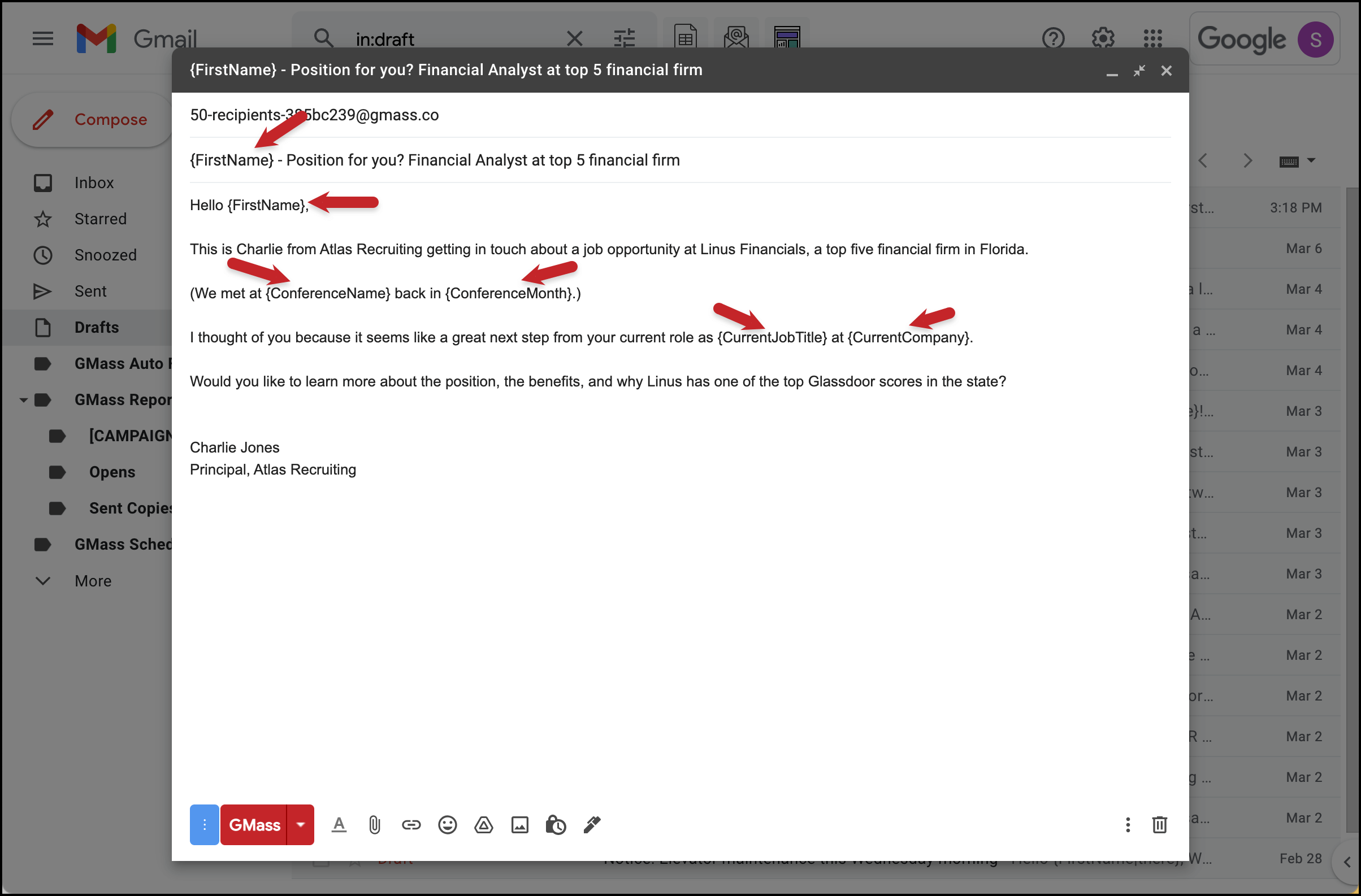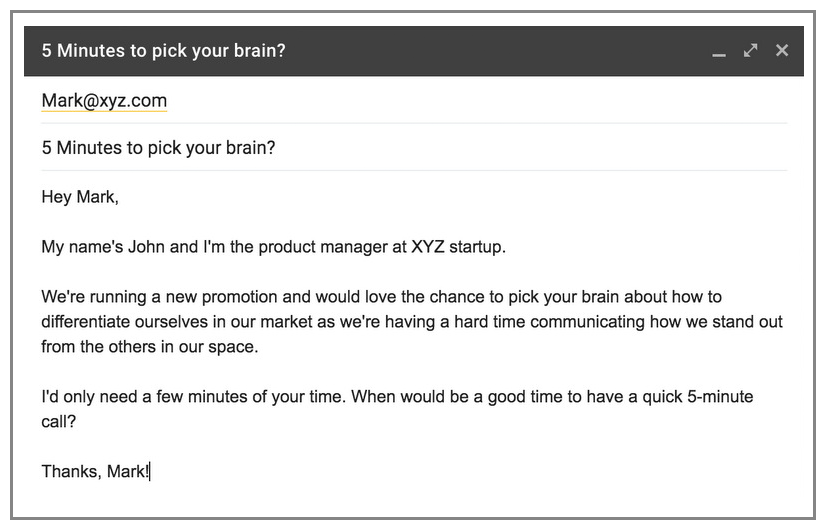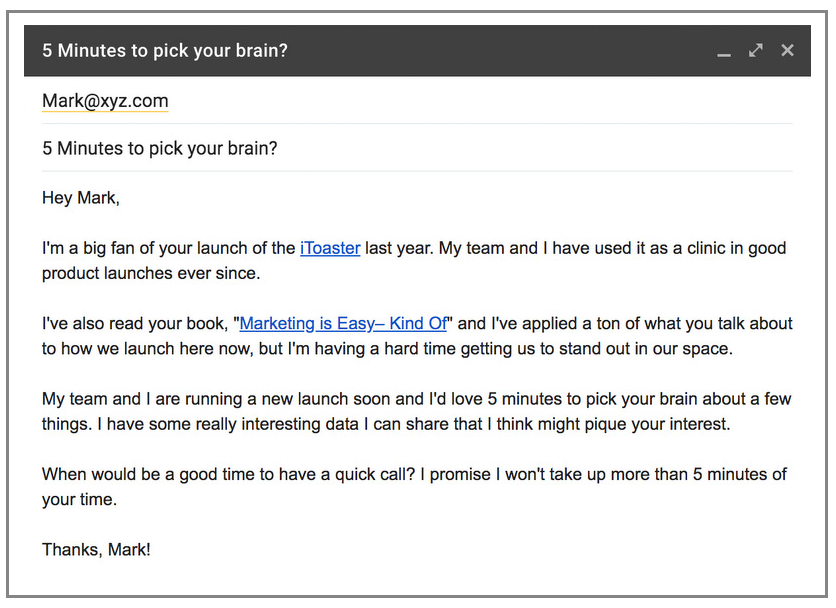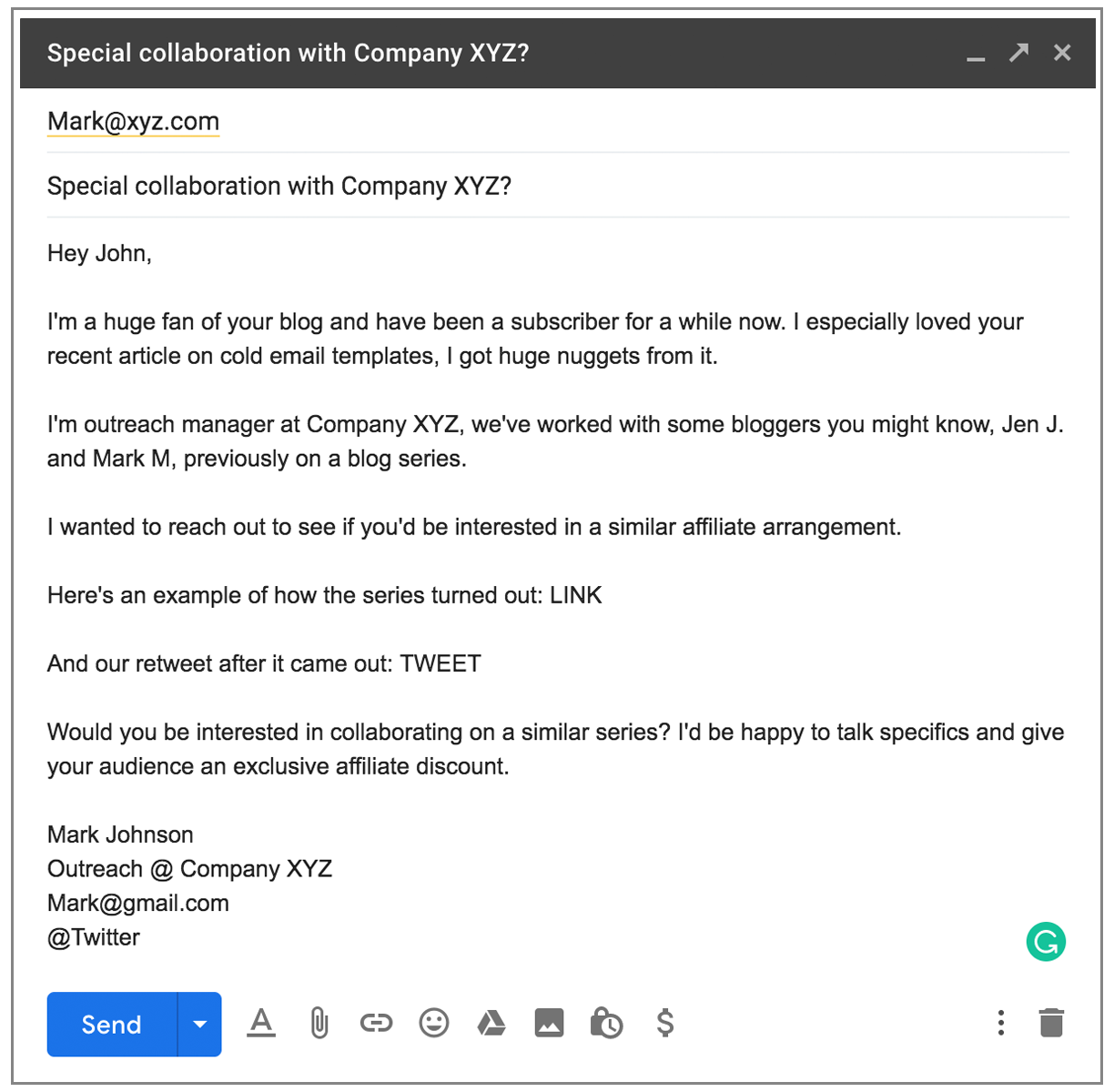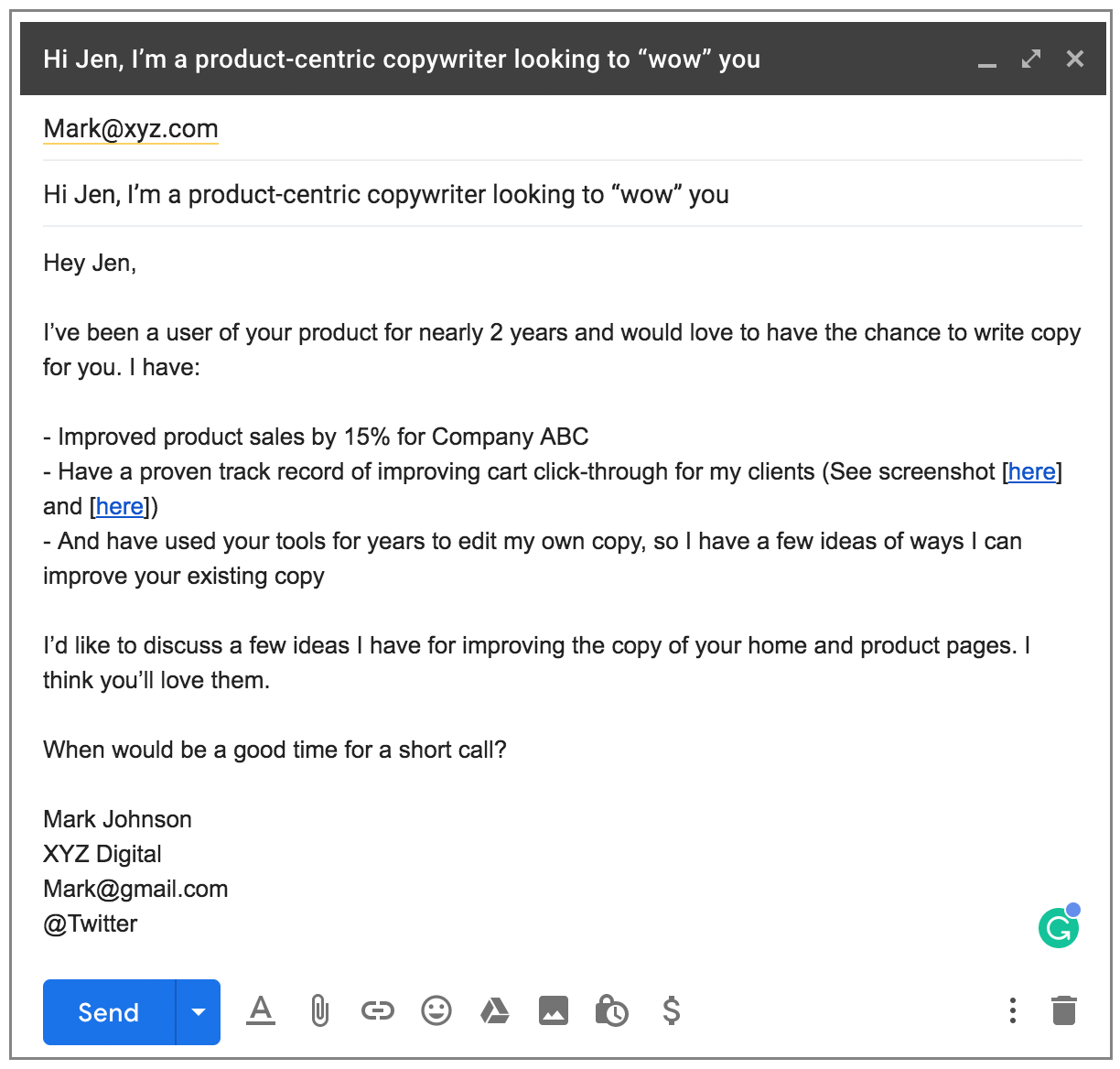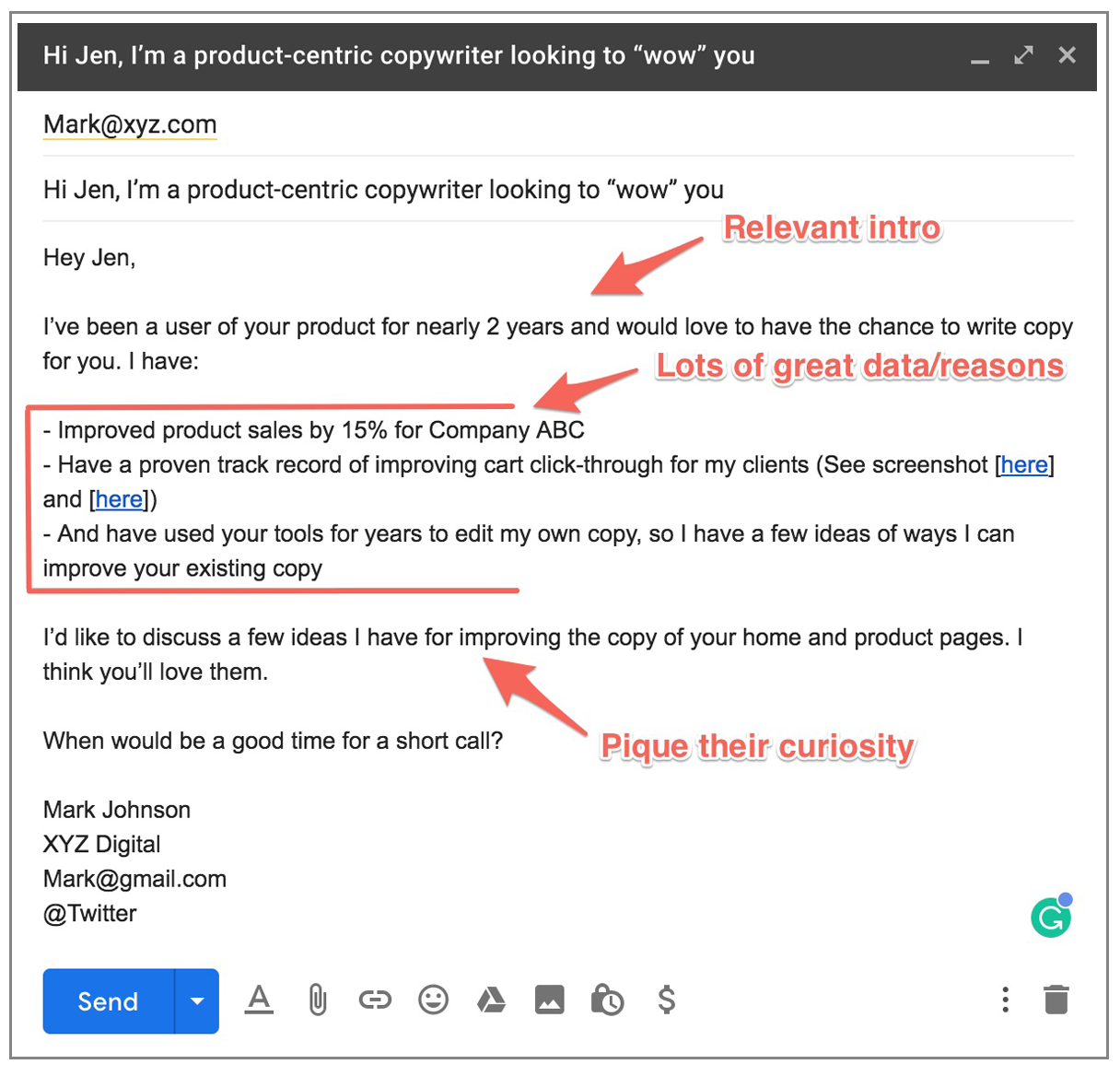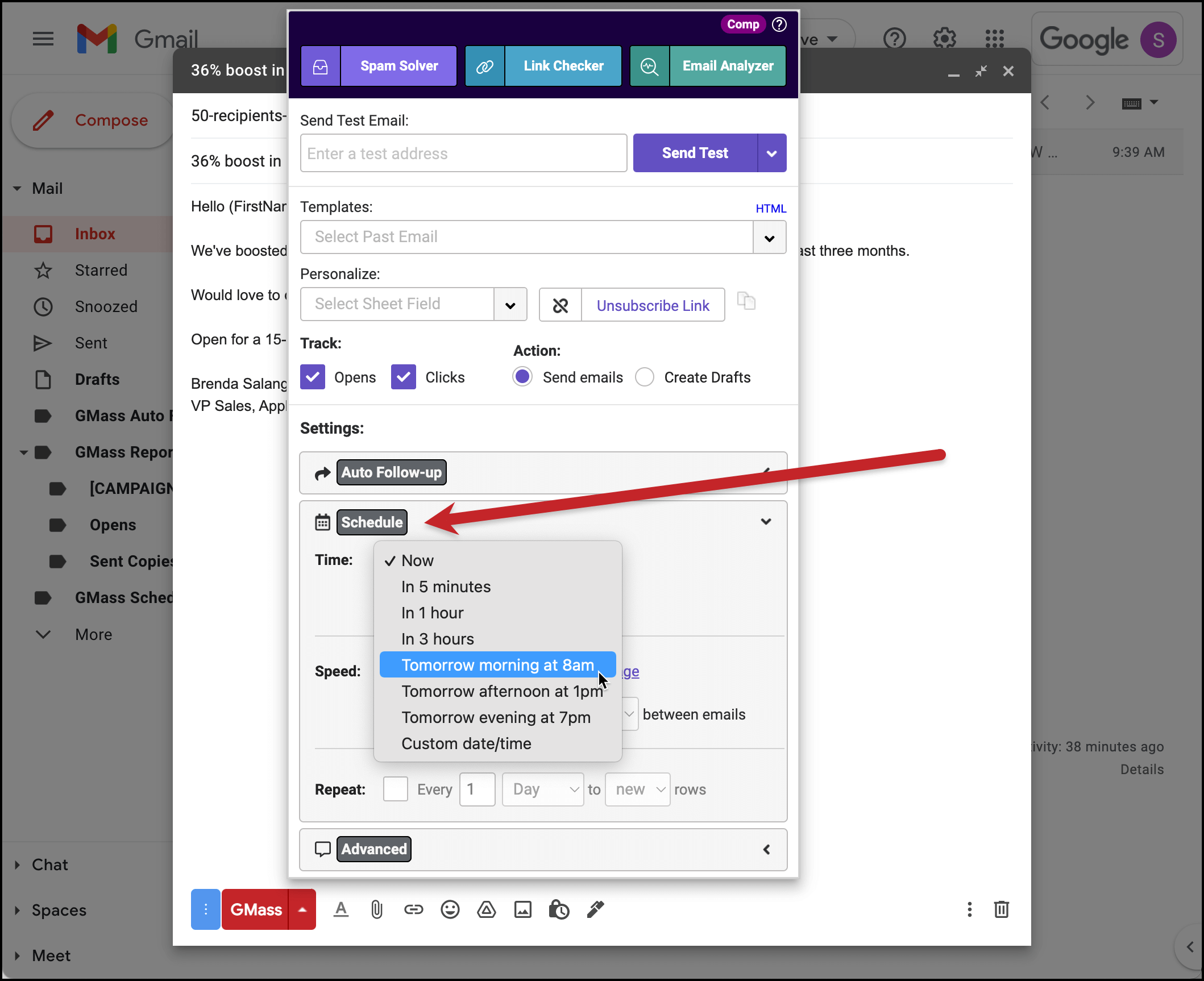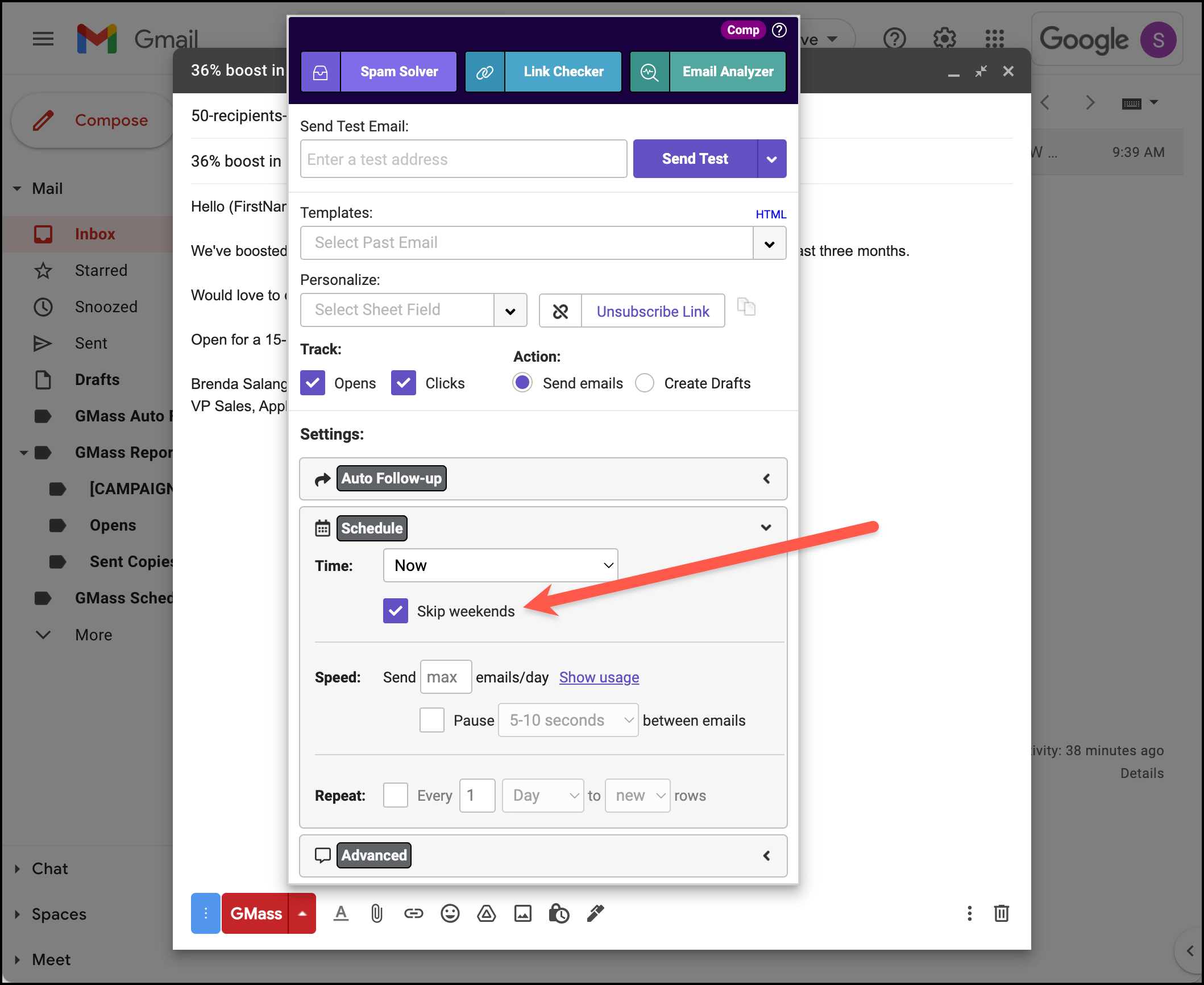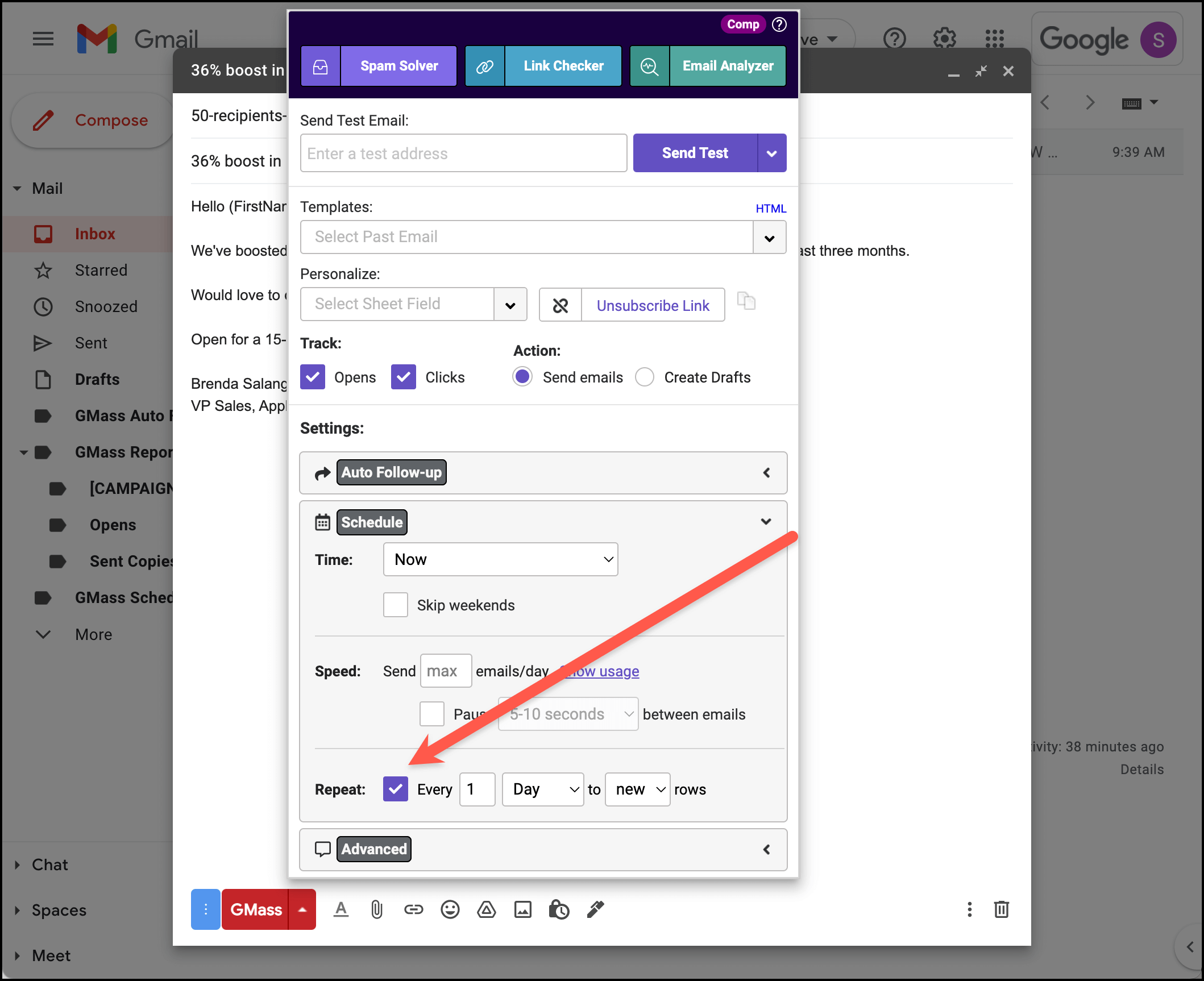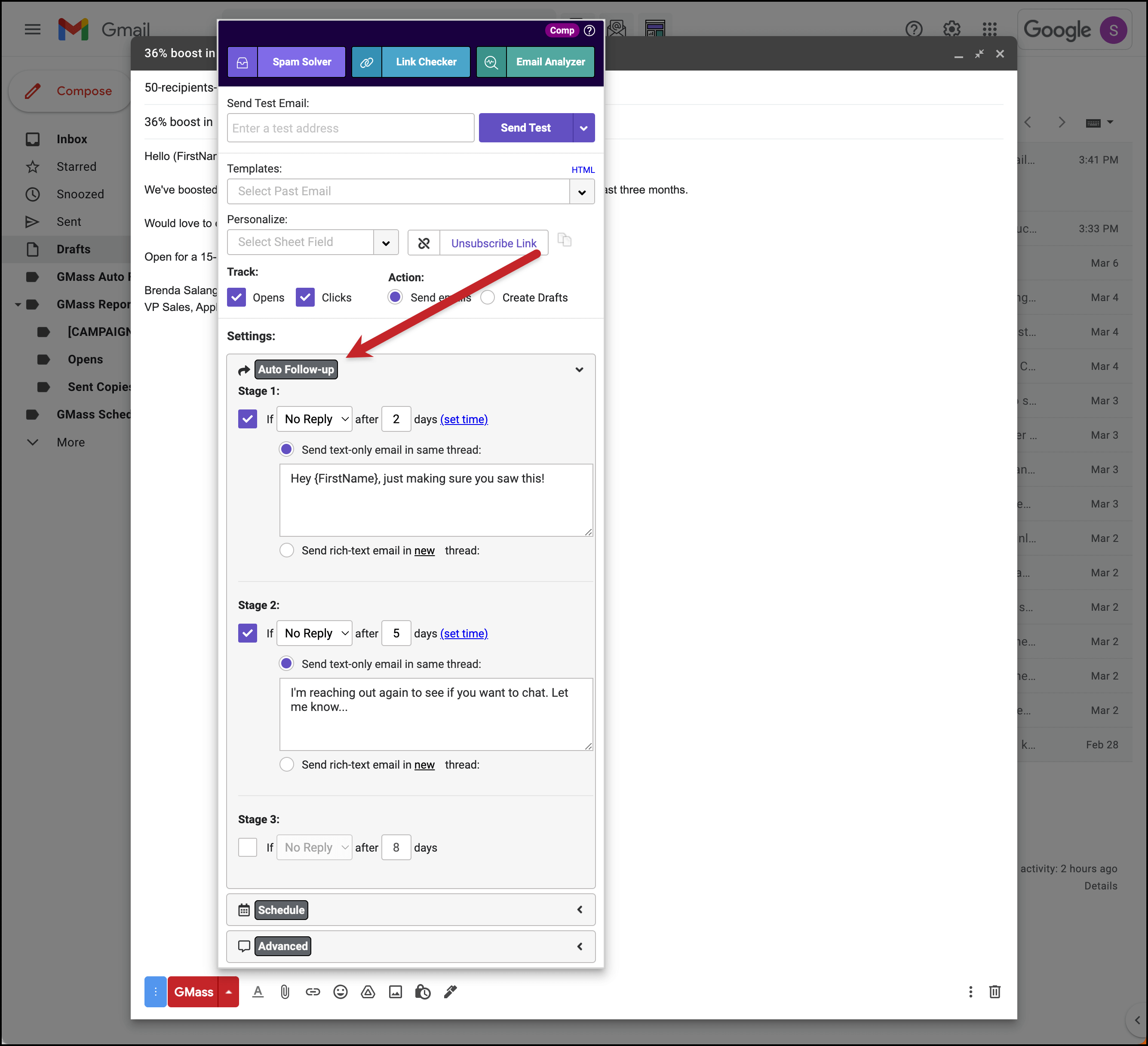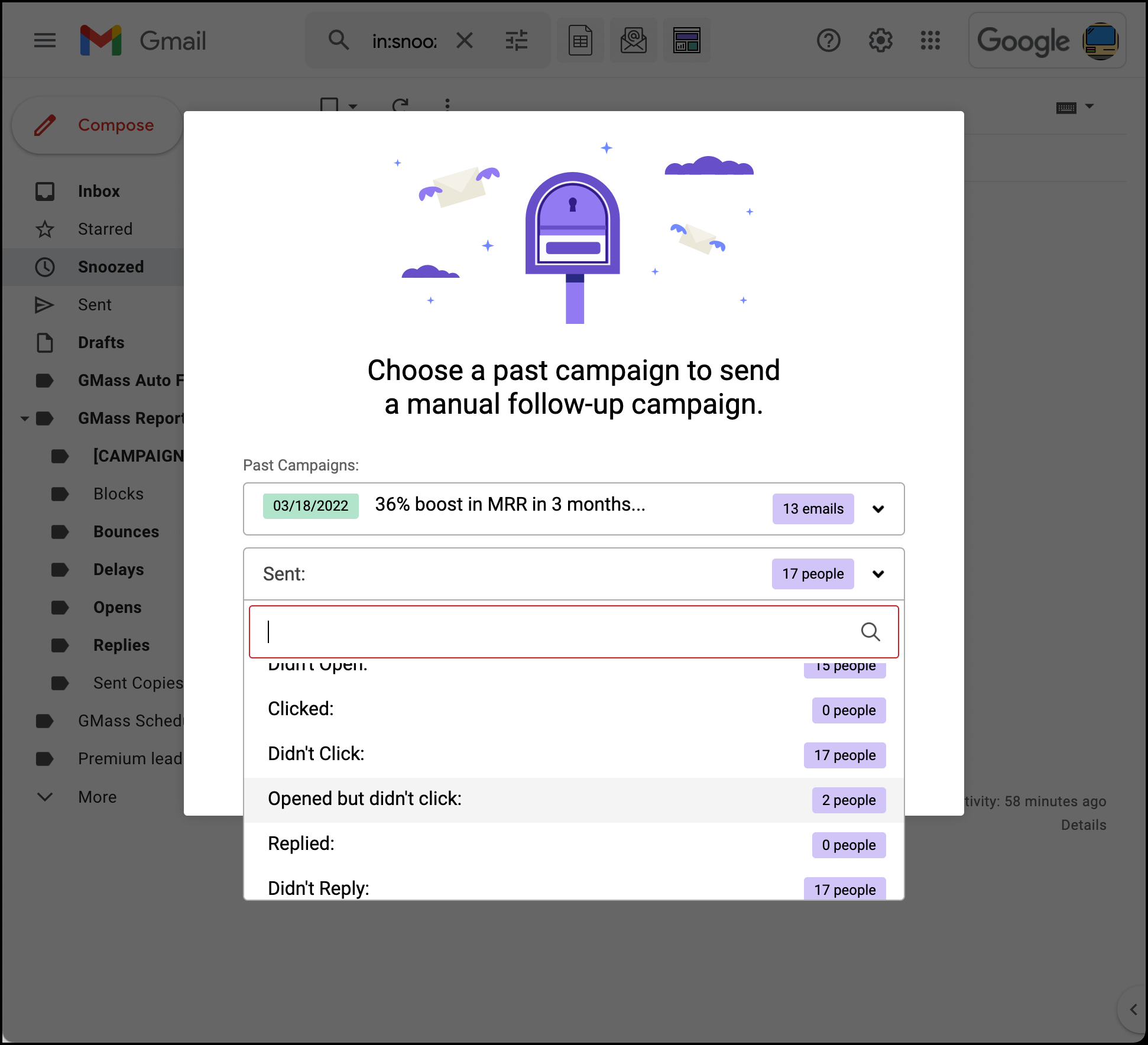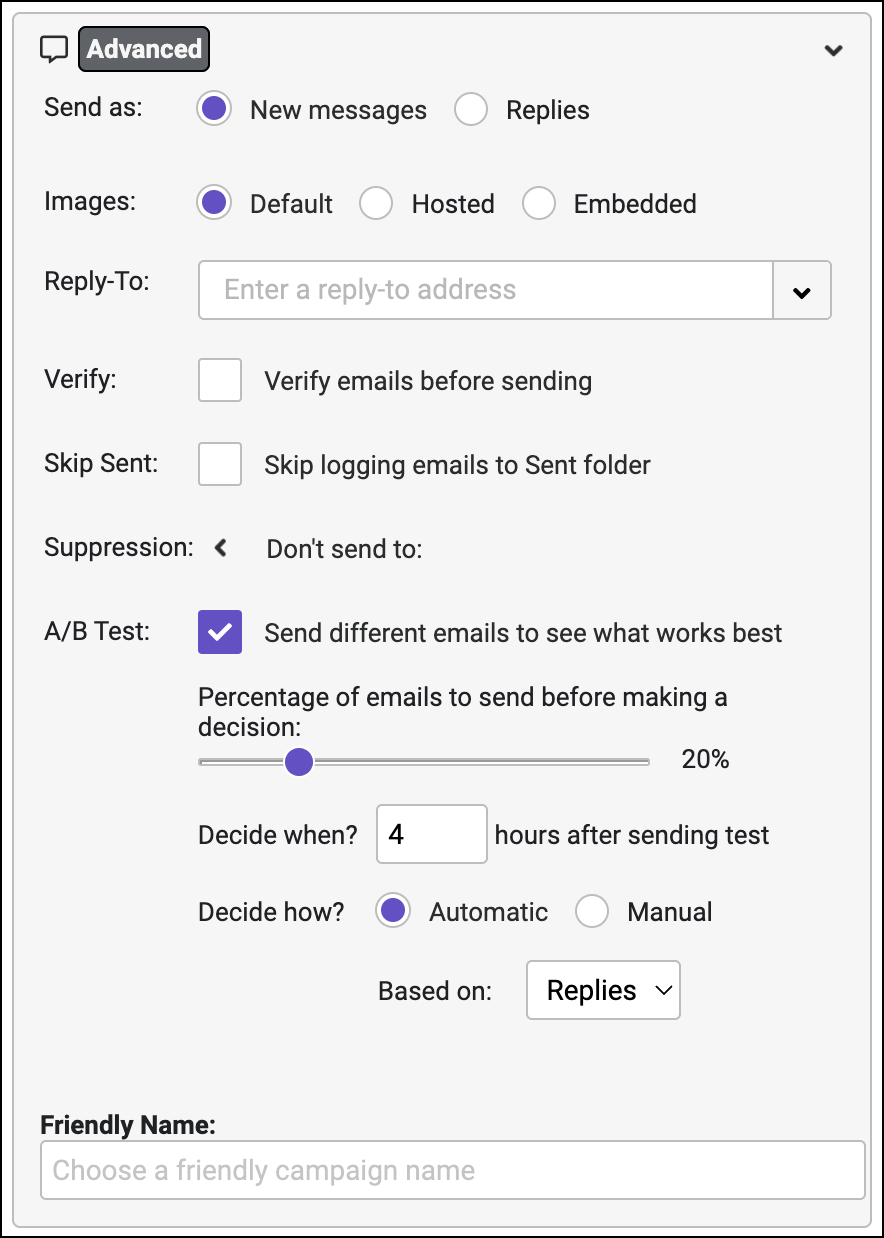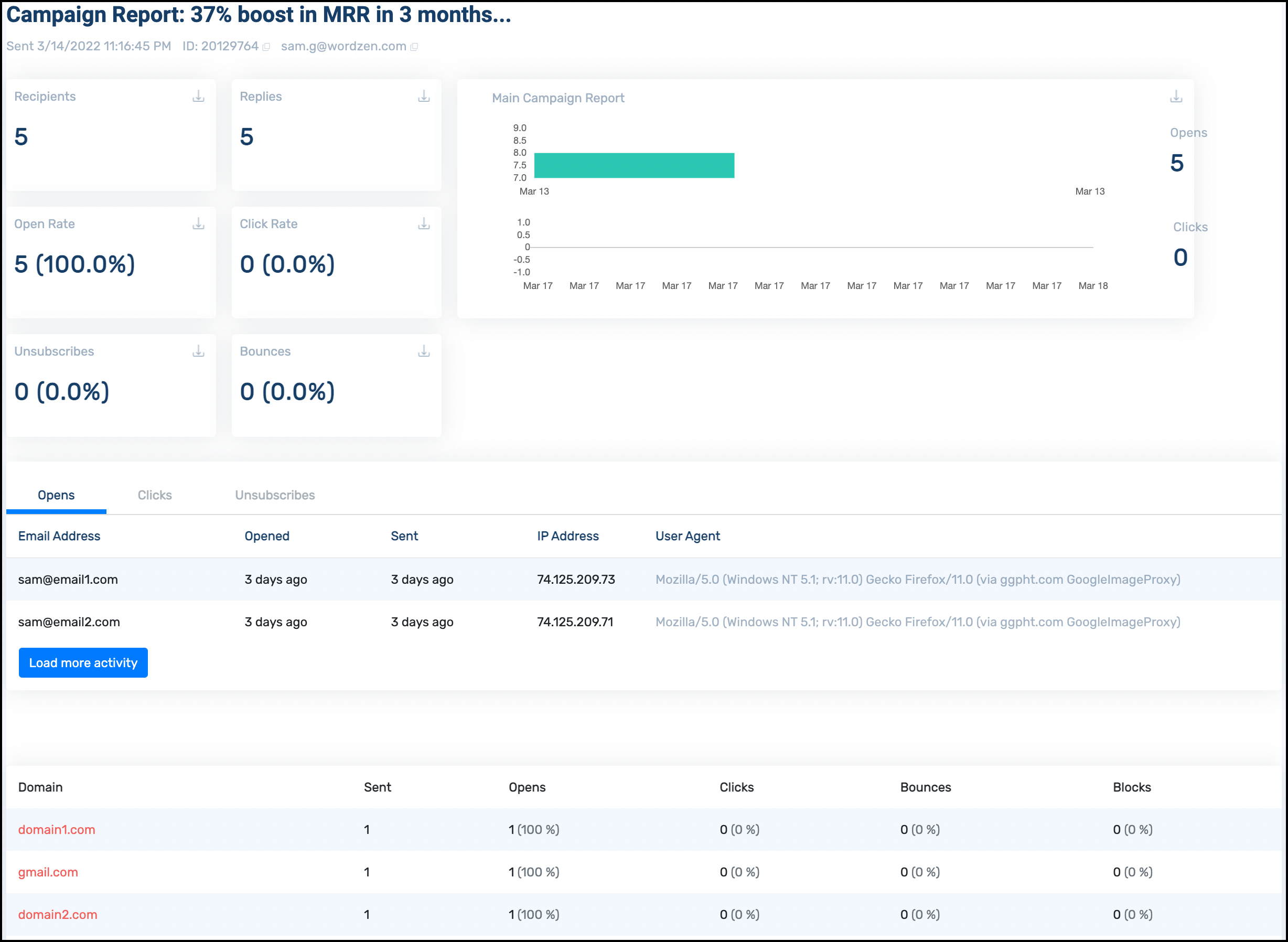Cold Email Strategy Guide: The 10-Step Method for Outreach That Works
How to avoid the spam folder, increase your open rate, get replies — and close deals
You’ve arrived at this cold email guide for two reasons.
- You know cold email isn’t easy.
- You know cold email is incredibly effective if you do it right.
Because cold email works.
Yes, every email you send has to compete with dozens — often even hundreds — of emails in the average professional’s inbox every day. And yes, you’re a stranger, where most of the other emails they’re receiving are from colleagues or lists they’ve joined.
But when you do cold email outreach the right (and smart, and strategic, and professional) way, you can stand out. You can get people to open your emails and reply to them. (The average cold email reply rate is 1% to 5% — let’s help you beat that.)
And most important, your cold emails will turn into closed deals (or whatever other results you’re after).
This guide will show you how. We’re going to walk through our 10-step method for cold email outreach that actually works — a method based on our experts’ 20+ years of experience and our studies of the 4 billion+ cold emails sent through the GMass platform.
We’ll cover both how to get your first cold email campaign going and how to improve your conversion rates.
You should find gold here even if you’re a seasoned sales rep or taken one of the many cold email masterclass offerings out there.
Ready to maximize your cold email outreach efforts in every way? Let’s dive in.
Cold Email Strategy Guide: Table of Contents
- What Is Cold Email?
- The 10-Step Method for Cold Emailing That Works
- Cold Email FAQ
- Cold Email: Conclusion and Takeaways
What Is Cold Email?
A cold email is a message you send to a contact with whom you have no prior relationship. Cold emails have a legitimate business purpose and make relevant offers to targeted prospects (which differentiates cold email from spam).
There’s little difference between the goal of a cold email vs. cold call, other than the medium. (And that cold emailing is usually a lot easier to do at scale than cold calling.)
In both cases, you’re reaching out to a stranger, making a personal connection, and trying to achieve a business-related result. And if that result is clearly beneficial to your potential client as well, odds are, you’ll find success.
Examples of cold emails you might send:
- An sales email to a CEO or manager on your prospect list that you’ve never met when you want to set up a demo.
- An email to someone in your industry so that you can build brand awareness and network with them.
- An email to a potential investor you don’t know to establish the beginning of a relationship.
- An email to a company that’s hiring (or might one day be hiring) someone in your area of expertise to try to set up an informational interview.
What makes a cold email “cold” is that there is no direct connection or relationship between you and the other person. Your email needs to hit their inbox. Something needs to compel them to open it. Then something needs to compel them to reply.
What is cold email marketing?
Cold email marketing is reaching out to prospects you don’t know by email rather than by cold calling, messages on social media, or any other method.
The purpose is the same between a cold email and cold call, but email is much easier to scale for the sender and far less intrusive for recipients. Because of this, prospects are more receptive to a series of cold emails than to repeated cold calls.
Like advertising, the aim of cold marketing email is to introduce your company or product to a targeted recipient (or ad viewer) and persuade them to respond or buy. However, compared to advertising, email outreach is far more cost effective and often more precisely targeted.
A successful email campaign message combines relevant and accurate personalization, content that is meaningful to the audience, and a specific call-to-action. It’s the right message for the right person at the right time.
Beyond the message itself, reply rates can be increased by technical performance aspects such as list accuracy, email timing, deliverability, testing, and sender reputation.
Although the immediate goal of cold mail outreach is a response, it’s important to remember that many more people will read your email than will respond to it. Every message you send affects a larger audience than those who reply — therefore, it also informs, creates a lasting impression of your brand, can influence referrals, and sets the foundation for a potential relationship.
There are many types of cold email campaigns. While B2B sales emails comprise the majority of outreach emails, businesses also use mass emails for public relations, community awareness, brand engagement among consumers, networking and influencing within their sector, persuading other businesses to collaborate with their company, hunting for jobs, recruiting candidates for jobs, or building links to boost SEO for specific content.
Because of this, no two email outreach campaigns are exactly the same.
Is cold email spam?
No. When done right, cold email is not spam. Though a cold message and spam message are both types of an unsolicited email, cold emails are targeted, personal, and relevant. They have a legitimate business purpose and come from a verifiable source.
(It’s always good, however, to check with a lawyer if you’re worried about violating the U.S. CAN SPAM Act or other regulations.)
An effective cold email should include:
- Your full, real name
- Other relevant contact information, such as your website, social profiles, physical business address, and phone number
- Content personalized to the email recipient
- Your reason for contacting them, in plain English
- No clickbait in the subject line
While spam, on the other hand, often:
- Is sent from an email address without much service history (spammers have to change email IDs and services constantly because they get flagged as, well, spammers)
- Uses a fake name or company name
- Adds clickbait to the subject line
- Is copied and pasted (no personalization)
- Uses deceptive copy to get you to click on a dubious link
- Is often commercial in nature. That is, they’re outright trying to sell you a product in the initial email without any relationship-building first.
Take this email I received, for example:
This is an example of spam, not cold email. There’s no personalization and vague content. They’re not referring to me by name; there’s not an ounce of personalization. In addition to that, there’s not a single piece of contact information listed.
There’s a common worry among rookie cold emailers that their messages will be the target of a spam filter.
And you should take measures to make sure your emails aren’t labeled as spam. (We’ve got you covered in the next section.) But in general, those worries are blown out of proportion.
A cold email, when done right, is far from spam.
A successful cold email is not vague or general, its grammar and language aren’t questionable, and it gives the recipient the opportunity to verify the sender via real contact information.
The 10-Step Method for Cold Emailing That Works
It’s time to get into the 10-step method for cold emailing.
If you’ve solidified all 10 areas listed below, your cold emails will rise above the marketing email morass and earn the results you’re after.
When you follow these steps, your cold emails:
- Will go to targeted recipients at the right time.
- The messages will land in the inbox and entice a potential client to open.
- The personalized, relevant body of the emails will engage and intrigue the prospects and the call-to-action will push them to reply.
- And if they don’t reply right away, strategic follow-ups will continue to push them to do so.
Here are the 10 steps for cold emailing that works.
Self-guided email warmup: Get your email address and domain ready for cold emailing
It’s tempting to dive in right now to start sending cold emails.
But if your email address suddenly jumps from sending a few emails every day to a large volume of (nearly) identical emails out of nowhere — that’s a red flag to the email providers you’re sending spam.
And that’s especially the case if you’re using a brand new email address and/or domain.
Before you start sending cold email it’s the best practice to warm up your email address.
Now… there are email warmup tools that use an automated process to send emails from your account, open those emails, and sometimes reply to them, mark them as important, or mark them as “not spam.” The tools gradually ramp up the volume — starting from a small number of emails per day, then increasing.
We had one at GMass. It was the most popular one in the world. Then Google decided to crack down on automated warmup tools — everyone knew it was only a matter of time until that would happen. So we stopped ours.
So you can and should run a self-guided warmup process. Basically: You gradually increase the number of emails you send every day, building to larger and larger sends. And as Google sees those emails are not spam — based on recipients opening, clicking, and replying — you’ll hit more and more people’s inboxes, not their spam folders.
Once your email is warm, you’re ready to send cold email at scale — and land in the inbox. Without warming up your address, there’s a real risk of the majority of your emails going to spam.
Other email deliverability tools
Check out this suite of free deliverability tools to make sure your emails hit the inbox like they’re supposed to.
- Custom tracking domains, so your emails aren’t sharing a tracking domain with other senders. (And GMass is one of the only places that adds free SSL to your tracking domain, to make your links secure for even more of an email deliverability boost.)
- Spam Solver tests your campaigns to gauge whether they’ll wind up in the inbox, spam, or promotions folder — then helps you tweak your email to improve inbox rates. (The Inbox, Spam, or Promotions? tool is an option that works for campaigns from any email provider.)
- Email Analyzer looks at the technical side of your emails, including SPF, DKIM, blacklists, and the SMTP conversation behind your messages.
- The Email Deliverability Wizard shows you stats across thousands of cold campaigns to help you gauge your campaign performance.
Prospecting and list building: Finding the right leads — and right info about those leads
Ultimately, the success of your campaign is rooted in how well you know your target customer. (And then how well you pitch to them. But if your audience targeting is off, the best pitch in history still wouldn’t work.)
The aim of most outreach messages is to persuade, and the best way to persuade is to understand what matters most to your audience.
After all, people are most likely to engage with something that helps them. (Unfortunately, many email marketers and cold emailers still miss that essential point.)
Figuring out who should receive your marketing emails is as important as what they say. Once you’ve determined your target audience persona (a list of your ideal prospects’ characteristics) then you need to do some serious prospecting to find the email addresses of people who match that criteria.
Where to find emails
There are lots of prospecting tools to help you find contacts’ addresses, such as Hunter.io, Snov.io, and Voila Norbert. But remember as you use these tools: The quality of email targets is more important than the quantity.
If you’re a B2B marketer or sales rep, you’ll want to focus your search on LinkedIn and any professional associations to which you have access. That’s where you’re most likely to find potential leads who are well-matched to the product or service you are promoting.
(It’s also a great place to learn more about your prospects — which you’ll need to personalize your emails.)
Don’t overlook your email contact list or those of your colleagues, even if your connection with them is currently dormant. These are often high-quality leads already within your reach.
Your inbox may be a goldmine of prospects — without you even realizing it. With GMass, you can build a brand new mailing list out of a Gmail search.
One thing to avoid is buying an email list. While it sounds like a fast way to get started, purchased lists have lower quality and often contain email addresses that trigger the spam filter.
Validate your email list before you send
Prospecting often involves bringing in emails from numerous sources — your inbox, contact hunting services, LinkedIn, conference lists, and more.
It’s wise to verify each email before you send; validating your email prospect list can help ensure all the addresses are legitimate and working. (Validator tools can help you do this — here’s our totally free email address verification tool.)
Choosing the right cold email platform
Your goal with email marketing software is to find a platform that:
- Speeds you up (and definitely doesn’t slow you down)
- Helps ensure the best possible email deliverability rates
- Has the cold email features you need (like scheduling, follow-ups, and more)
- Is up front with limits and caps as to not limit your campaigns unexpectedly
The “best” cold email software depends on your overall needs, and in the last several years, your options have increased. Here are some of the leading options:
GMass
Don’t you hate it when a company puts their own product first in a recommended product list on their website? We do too.
But we’re confident leading with GMass for two reasons. (1) It’s one of the most popular cold email platforms on the planet with the most robust set of cold email-friendly features (2) GMass’s 4.8-star average with 7,600+ reviews in the Chrome Web Store is pretty much unheard of.
Oh… and GMass is also somehow still the most affordable option for cold emailers as well.
GMass works inside Gmail/Google Workspace, so there’s no new interface to learn. It offers full mass email abilities and, because it uses Gmail, provides top-level delivery. (Here’s more on what makes GMass better.)
You can get started with a free trial of GMass by downloading it from the Chrome Web Store.
Hubspot
HubSpot integrates sales, marketing, customer service, and content management from one platform. Though its outreach is sophisticated and the system is extremely complex, it doesn’t fully embrace cold emails.
Woodpecker
Woodpecker offers a cold email tool, a sales automation suite, and an agency management platform. They operate on a model where you pay-per-contact and your emails go to a standalone inbox. Some of the features that are standard on most cold email platforms (like A/B testing or an API integration) are paid add-ons.
Mailchimp
Mailchimp is a familiar and respected name, and is often the first experience for new email marketers. While it’s not a pure cold email platform, it’s a popular email marketing one.
Mailshake
Mailshake targets enterprise clients — there’s a mandatory 30-minute sales demo if you want to sign up, and no free trial. All email setup goes through their lengthy wizard and sends are capped at 5,000 to 10,000 recipients per campaign.
MailRush
MailRush uses its own server, which can be problematic for deliverability. There are caps on emails per month, emails per day, email validations, and number of campaigns.
ActiveCampaign
ActiveCampaign is a versatile email marketing and bulk mail platform to help you manage your CRM and mass email from the same place. It’s another one that’s not a pure cold email platform.
Amazon SES
Don’t be fooled by its full name: Amazon Simple Email Service. Amazon SES is a scalable service created for developers seeking IP and authentication options.
Yesware
Yesware is a cold email product with a focus on sales teams. Its enterprise plan has a significant Salesforce integration.
Lemlist
Lemlist is a cold email platform that also brings in phone and LinkedIn outreach at its highest-priced plans. It’s not designed for high-volume sends but more for small, very targeted campaigns.
And more
For even more cold email software options, check out our complete guide with breakdowns of the top 15 platforms.
Personalization: First names are just the start
Personalization is one of the most important aspects of a cold email campaign. Even though you’re sending a mass email, it’s important for every email to feel like it’s a one-on-one message.
Proper personalization helps simulate that one-on-one feel.
With mail merge, you can add personalized data about every recipient to a mass email.
Virtually all cold email platforms have some form of mail merge. It doesn’t always work the same from platform to platform — some use Google Sheets, some use CSVs, some use CRM data, and so on. However, the basic principle is the same: If you type the mail merge tag for {FirstName}, each individual email will contain the recipient’s first name.
Here are some of the ways you can use mail merge to personalize your cold emails.
Using a first name
If this were an email you were sending to a friend, would you write to “Mr. X,” or would you simply greet ”John?” The answer is most definitely John.
You aren’t on a first-name basis with cold email recipients you’ve never met; however, referring to them by their first name in a sales email sets a friendly and personalized tone.
Without first-name personalization, your email recipient sees that you don’t even know who they are, and they’re likely to ignore your message. After all, people love hearing their own names, and it has a kind of “disarming” effect that you can use to your advantage.
GMass even has a unique first name detection feature. GMass can detect recipients’ first names from their email address to add it to emails.
However, just adding in people’s first names and calling it a day on personalization isn’t enough. You need to take this a step further for maximum effect.
Using other simple mail merge fields
With most (though not all) of the cold emailing platforms you can turn pretty much anything into a mail merge field. That includes data like:
- Last names
- Company name
- Website
- A specific URL (like a blog post or podcast)
- Industry
- Location
- And anything else you might want to reference
Pepper these into your email to help tailor your message to each specific prospect.
Fallback values
You need a contingency plan for situations where you don’t know a recipient’s first name or company or any other merge field. That’s where fallback values come in.
An example of a fallback value is Hello {FirstName|friend} — if there’s no merge value for the person’s first name, the email software will write “Hello friend.”
Conditional content takes it a step further and allows you to use If-Then-Else logic based on merge data. For instance, an email could contain one message for people in the aviation industry and a different message for people in the shipping industry — all thanks to conditional content.
More advanced mail merge personalization
Want to take your mail merge beyond first names and other simple insertions? There’s a whole lot more you can do with mail merge to customize your messages.
- Personalized links for each prospect.
- Personalized attachments are not always popular in cold campaigns, but may come up in other mass email campaigns.
- Personalizing entire paragraphs and other large blocks of text.
- Personalized images or personalized video
- Sending to a personalized CC or BCC address.
- Personalizing the To field to include contact names.
A personalized opening line or icebreaker to create a connection to each recipient
Every cold email you send should attempt to create a connection.
At its most powerful, this connection is something you have in common, like a referral from a friend. You may never have met before, but your old colleague Mark vouches for you and says the two of you should meet.
BAM! That’s immediate relevance of the highest magnitude.
Unfortunately, most cold emails you send won’t be able to use that tactic because you won’t have a mutual acquaintance.
However, you can still use the same strategy for creating a connection and making the email relevant to them.
When you take the time to find common ground, your cold emails become relevant to the recipient, increasing your chance of getting a response.
Here are some examples:
- You worked at the same company at different times
- You grew up in the same city
- You’re in the same industry
- You heard them speak at a recent conference
- You have a similar interest or background
- You read their blogs regularly
By creating a connection through relevance and commonality, you take a cold email and make it a bit warmer.
It’s no longer a purely cold email. It has a friendly element in the communication that’s invaluable for sparking a conversation with relative strangers (and getting them to feel comfortable with the idea of responding to you).
There are even AI tools that can research your contacts for you and write intro lines to help create those connections. (Although their results are far from perfect.)
Cold email subject lines: What compels a cold lead to open your email?
The first (or last) place to start is your subject line.
Delivering on the promise of your subject line is essential. For that reason, you might actually prefer to wait until your email is finished before writing the subject line.
By doing that, you can most accurately craft your subject line around your email content — content which may change slightly as you sit down to write it.
However, because your subject line is the first thing your recipient will see, and they need to click through before ever reading your email, it’s not something to brush off.
What’s in a good cold email subject line?
A great cold email subject line is:
Clear and direct. No clickbait; make it clear what your email is about from the subject line. There are some exceptions to this, but consider this the general rule.
Personalized. You don’t have to use their first name in your subject line, but it can improve open rates if you do.
If you don’t include a first name, consider mentioning some other piece of information that’s relevant to the recipient.
Able to communicate value. You don’t always have to communicate value in your cold email subject lines.
However, in most cases, this is your best strategy for generating clicks.
That is, unless you’re lucky enough to have a mutual contact, high brand awareness, or other connection to them that you can make clear in your subject line
Short. The best cold email subject lines are short and sweet, somewhere in the 6-10 word range according to MarketingLand’s research:
Cold emails with subject lines that are ten words or less have the greatest likelihood of getting opened. Cell phones typically show the first seven or eight words of a subject line.
And if you want to take this a step further, typically no more than eight words fit on the average mobile screen, so try to shoot for six to eight words to maximize open rates (though don’t kick yourself if you can’t hit this every time).
Don’t use clickbait subject lines
Spam subject lines are traditionally clickbait-y. But you want to stay away from clickbait subject lines for another reason.
The subject line should match the email body. In other words, the email should make good on the promise made by the subject line.
If it doesn’t (i.e., if it’s clickbait), the moment it dawns on your recipient that you’ve tricked them into opening your email, they’re gone — and you won’t get them back.
One of the quickest ways to shoot yourself in the foot is to use clickbait-y subject lines. They prove that you’re not trustworthy, and that’s the end of the line.
Whatever you do, make sure your subject line clearly matches what’s in your email. That helps keep you out of the spam folder — and you’ll get more responses in the process.
Examples of subject lines that create value
Expressing or promising value for the recipient in your subject line is a great way to generate opens.
For example:
Here are a few more examples of value-based subject lines:
- “A quick idea for improving [topic of interest for the prospect]”
- [Competitor] outranks you for [keyword] (Let’s talk)”
- “We’ve studied the best [groups] in [industry]. Here’s what makes them different.”
If you’re writing a value-based subject line, do your best to hint at the value you’re offering them succinctly without giving the whole thing away. That will entice your prospect to click through out of curiosity.
Examples of subject lines that create a sense of urgency
Creating a sense of urgency isn’t something that should be manufactured. (Remember, deliver on your promise. No deception.)
However, if urgency is there, take advantage of it.
For example:
This kind of subject line uses scarcity to compel the recipient to act, which is super effective as it makes it harder to snooze or ignore your email.
Here are a few more examples:
- “Mark — free for a quick chat next Thursday?”
- “Only [number] seats left for [training]…”
- “Next week only — watch me [do a thing] live.”
- “Are you on track to hit your Q3 goals? (I’d like to help.)”
Examples of subject lines that use relevance to create a connection
Earlier, we touched on the real difficulty with cold emails: They’re, well, cold.
You might not have a mutual connection you can pull out of a hat. (If you do, lucky you!) But you can usually find something relevant to the recipient to help draw a connection in your subject line.
For example, if you’re selling a tool that makes social media marketing more effective to Instagram influencers:
Here are a few more examples:
- “Live chat improves e-commerce apparel conversion rates by 20%”
- “[Industry] has a real problem with [obstacle]”
- “Most [professionals you’re targeting] make this mistake”
For more on crafting high-quality cold email subject lines that generate clicks, including over 40 examples for half a dozen scenarios, read 43 Cold Email Subject Lines That Get Your Emails Opened Instantly (and When to Use Them).
The “From” field — who should the email be from?
A cold email campaign should come from you — meaning your name should be in the From field when the email shows up in recipients’ inboxes.
This isn’t just a good practice for avoiding spam; it makes a real difference in your conversion rates, as well.
The message should look and feel as much like a personal email from a friend or colleague as it possibly can. And that starts with making sure to use your personal email (which can be your professional you@company.com email address) and your name.
Preview text in cold emails?
Preview text is the text that appears next to or underneath the subject line in the inbox. It’s usually a lighter color (the subject line might be bolded black text; the preview text is unbolded gray text).
Preview text is not universally popular in cold email — because it can break the illusion of a one-on-one email. After all, if you were firing off a single outreach message, you probably wouldn’t be using software that allows you to add preview text. (Or editing the HTML of the email yourself to add preview text to the message.)
However, preview text is popular for other email marketing campaigns and can be an essential tool for standing out in the inbox.
Cold email copywriting: Strategies, best practices, and templates that work
Now that we’ve covered subject lines, time to move on to the email body.
We’ve arrived at the big moment: Composing your cold email.
We’re going to cover general strategies and philosophies first — then get into the cold email templates.
Cold emailing strategy: Fundamental principles of effective messages
There are many cold email tactics and strategies you can employ, depending on who your potential customer is and what they’re willing to receive from you.
Here are some popular options to adapt for your own needs.
Offer, don’t ask.
Busy, high-ranking corporate officers are irritated, not engaged, when you ask for their time. Why? They don’t have enough time to start with, so they certainly don’t want to give it to strangers. Instead, offer to solve a problem.
Example: “If you’re spending countless hours reviewing and monitoring division budgets, try our handy budget scanner-evaluator instead. It’s only $7/mo, and it’s guaranteed to cut your time in half.”
Be valuable, not vague.
When you want to introduce your product or service to a potential customer for the first time, rather than paragraphs explaining your features and benefits, open with a short sales email that tells them something useful.
“Did you know that up to half of your potential customers will be unavailable on these six dates? Tuesday, April 13; Wednesday, July 7… As digital marketing experts, we can ensure you never waste a campaign by sending it on the wrong day.”
You share a little expertise that helps someone else and costs you nothing, and you establish that you’re an expert in your field without the lengthy sales pitch.
Offer value — either immediate value or value as a result of taking a particular action.
Examples include:
- A solution to a problem they have
- Data or information
- A resource
- Setting up an informational interview
- A valuable networking contact, or
- The ability to connect with someone of like interest
No matter what kind of value you offer them, you want to make sure there’s always something in it for them.
Use light-heartedness or humor for casual audiences.
There’s no need to be serious about every topic, and not every audience is receptive to it.
When your product or service is fun, uplifting, whimsical, or personal, there is room for a fresh, casual tone to engage recipients and encourage response.
For example, “What’s the scientific principle that creates a difference between curly hair and straight hair? Who cares! Come in on Thursdays for 30% off deluxe straightening and luxury perms.”
Make it about them, not you.
Here’s a huge best practice: Your entire message should be written from the perspective of the prospect: why you appreciate their work, what you can do for them, what they need – as opposed to who you are, why you’re special, or why you need them to respond.
Too many people write emails like this:
There is no personalized content in the body of this cold email, and nothing that relates to the recipient’s interests and needs.
This example oozes “I want, I want, I want” and doesn’t stand a chance of getting a reply.
However, change the email to something more like this…
By learning about the recipient and focusing on their interests in your cold email, the message is more relevant and considerably warmer… and your chance of obtaining a response increases by a significant amount.
If you remember this one thing, it will make writing your emails easier because when you focus on what matters to the recipient, it will affect both your perspective as a cold emailer and the success of your content.
(For a good example, check out what Adam Grant said about the best cold email he’s received.)
About cold email templates
There’s a lot of advice about template formulas that don’t give much insight into when you should use one template versus another.
No longer.
We’ve broken down four cold email templates with examples. Each is centered around a particular purpose or type of cold email.
They are:
- The basic outreach email
- The networking email
- The demo email
- The services email
No matter what kind of cold email you’re looking to send, there’s an example that’s relevant to you.
And, keep in mind that each example can be adapted for any purpose.
Plus, we’ll break down why each template works so that you’ll understand the underpinnings that make the cold email template effective regardless of the purpose or strategy you use.
Cold email template #1: The basic outreach email
One of the two most common cold emails, the basic outreach email, is useful for virtually any situation — whether you’re trying to nab a guest post, network with a new contact, or schedule a sales call.
Here’s an example of the basic outreach email in action:
The basic outreach email is structured, short, and focused on the recipient. This format is a workhorse for cold emails and should be in every marketer’s tool kit.
Why it works
This email only has a few sections. It breaks down as follows:
- Compliment: Make it as specific as possible. It needs to feel sincere, or you’ll lose them before they ever get to the second line.
- (Short) Introduction: This isn’t your basic introduction. You need to make it relevant to the prospect by mentioning other names or companies in their space that you’ve worked with — or even just similar types of businesses.
- Example: This is typically an example of what you can do for or offer to them, whether it’s a mock-up, specific insight, post, or work sample.
- Question/Call-to-Action: Close it with a simple question asking if your offer is something in which they’d be interested.
Let’s look at that example again:
Notice how simple the structure of the email is.
Plus, the perspective stays almost entirely centered around them from beginning to end, minus the short introduction (which is also written in a way that’s relevant to them).
Those two things — simplicity and perspective — combine to make this email an easy read. It’s enticing to the recipient because you stay focused on communicating what’s in it for them.
Then, you finish with a clear example of the value you’re offering and a direct close in the form of a question.
The great part about this cold email template is it can be modified for virtually any use, so take it and personalize it to your heart’s content. (For example, this approach can be very helpful in job searches.)
Cold email template #2: The networking email
Networking is tough, but it can be highly effective through cold email.
Fortunately, with the right email structure, networking emails become much easier.
Chances are if you’re reaching out to someone for the purpose of networking, they’re successful — and busy.
In that case, they’ll appreciate you keeping it short and to the point.
And that’s exactly what this template does:
The networking email has one goal: to begin a conversation. This form of cold email needs to be short and highly personalized, and it must ask for a response.
Why it works
Notice that the structure of this email is similar to the first, but with a few modifications — most notably the closing.
Here’s how it breaks down:
- Compliment: Starting with a compliment is almost always a good idea. In this case, you’re not just complimenting them but drawing a connection between them, their work, and a talking point.
- Example (relevant) talking point: Make it as relevant to them and their work as possible, and something you genuinely believe would be interesting to them.
- Question: Unlike the first example’s closing question, this one instead elicits further discussion. You’re just asking them, “What do you think about this?” because your objective is to start a conversation.
Now, let’s look at the example again:
Studies have shown that shorter emails lead to faster response times, and this template is about as short as it gets.
That’s perfect because, as we said a moment ago, the likelihood is the prospect you’re contacting is busy and will probably ignore a long essay.
A short email like this gets to the point and has a much higher chance of generating a response. (That’s because it has a greater chance of being read.)
Also, remember that personalization is what makes this email work.
If you don’t know the recipient well enough, you can’t know what kinds of things they’d be interested in, let alone be able to give such a specific example. That makes starting a conversation difficult.
However, with social and professional profiles readily available online, some light research will help you learn more about your recipient to help your networking email succeed.
Cold email template #3: The demo email
One of the most effective uses of cold emails is generating new clients for your SaaS or other product.
A demo email is a bit longer because you need to give a brief description of the product, but it’s still important to be concise and to the point — and focused on the recipient.
Here’s an example of the demo email in action:
The challenge in writing a “demo” cold email is restraint. Don’t include all the sales points and details. Instead, follow this email template structure and say just enough to pique the recipient’s interest.
Why it works
Similar to the network email, if you’re contacting a professional in charge of adopting new software or other products into the/their business, they’re probably busy.
Make your email short and to the point but also crystal clear. The recipient should know exactly why you’re emailing them and what you want within just a few lines of text. Note that in the example, the sender didn’t explain how the product worked — only the main benefit of using it.
Here’s how the demo email breaks down:
- Intro + Offering: This email requires a little more explanation, so it’s vital that you get straight to the point. Make sure to introduce yourself and your company, as well as your product’s value. It’s important that the value you’re offering in your email is clear.
- Make sure you’re getting the right person: It can be challenging to know whether or not you’re getting the right person (decision-maker) when emailing a large company. Make sure you learn who that is by politely asking. Nothing more to it!
- Schedule the call: Be precise about how much time the call will take and what the purpose of the call is.
Let’s look at the example again now:
In the first line, you should simultaneously introduce yourself while making your offering clear.
This is a super effective way of getting to the point, and the person you’re emailing will appreciate it.
Beyond that, the email is simple: make sure you’re getting the right person and then schedule a call or demo.
And, to be extra safe, reaffirm you’re getting the right person. (You can also do this in a P.S.)
Cold email template #4: The services email
If you’re a services company or a freelancer looking to market what you do, it can be difficult to acquire clients through cold email.
However, it is possible, and email is one of the best ways to do it.
Here’s an example of the services email in action:
If you sell services, a cold marketing campaign can find new customers for you faster than sales calls.
Why it works
This example is inspired by the late legendary copywriter, John Caples.
In 1961, Caples analyzed the then-wildly popular Reader’s Digest to discover the secret to its success at hooking readers on consecutive issues.
His insights revealed that their most successful pieces were:
- Data heavy
- Concise
- Contained few adjectives
- And generated curiosity
So, here’s how our example breaks down:
- Introduction: Introduce yourself in a way that draws a connection between you and the recipient. You could be a user of their product or a fan of their blog, books, or work in general.
- Relevant data/results: This is where you lay it on them in as few words as possible, but make sure to include three or so good bullet points. (Three is the perfect number, but two or four also work.) They can be about your proven track record (social proof is always great), why you believe you’d be a good fit, ways you two are connected or alike, etc.
- Generate curiosity: Next, pique their curiosity by suggesting some sort of specific value you can offer them, which you’d like to discuss.
- Closing question: Schedule the call with a simple question.
Let’s look at that example again:
This example works because it not only proves that you’re a good fit for them (depending on your offer), but also it makes them curious about what you’re offering. And they’ll have to schedule a call to learn more about that.
For more on email templates, check out 5 Cold Email Templates for Any Situation and 5 High-Yield Cold Email Outreach Templates.
Writing a cold email that converts
Writing a cold email — whether it’s an outreach attempt with an influential editor of a prominent publication, or trying to schedule a sales call with a new prospect — isn’t all that difficult.
Writing a cold email that converts can be — but it doesn’t have to be if you follow our guidelines.
For more tips on writing high-quality cold emails that convert, read 6 Ways to Write Highly Effective Cold Emails That Get Responses. (Also look back at the Adam Grant email from earlier in this guide for even more ideas.)
Scheduling: Send the right messages at the right time
Reading this at three in the morning? As motivated as you are to start firing off cold emails right now, the goal is to have your emails hit your recipients’ inboxes at the moments when they’ll be most engaged. That might be 3:00 A.M. — but it’s probably not.
It’s wise to schedule your emails to go out at the moments when the people on your list will be receptive.
Scheduling campaigns
Most (though not all) cold emailing platforms will allow you to schedule your email for the future.
Pick the ideal time for your recipients. Maybe you want your email in their inboxes early so it’s the first thing they see in the morning. Maybe you want it to show up around lunch. Or maybe you think it’d be great for the late afternoon. Schedule accordingly.
Skip weekends
Some campaigns (and/or their follow-ups) may go out over the course of multiple days. In those cases, you might want to skip sending on Saturdays and Sundays. With GMass and some other platforms, you can choose to skip weekends on your campaigns.
Recurring campaigns
What happens when you send a campaign — then find some new prospects to add to your list? Set up a recurring campaign which automatically checks your Google Sheet of prospects — and sends your campaign to any new additions (at the right time of day).
You can set up repeating campaigns by the hour, day, week, or month. Just pick the cadence that works best for you and your campaign will continue to go out to new prospects as you add them.
Simulating one-on-one emails
We’ve covered it quite a bit through this article: Cold emails need to simulate one-on-one emails. It’s not about “fooling” someone into thinking you’ve only emailed them — it’s sending a cold outreach message that’s so personalized and targeted, the recipient wouldn’t believe you’re sending to anyone else.
Here are some of the most important campaign settings you can use to make every mass campaign feel like it was a single, individual message.
Adding specific, researched personalization
As we said in the personalization section, first names are a jumping off point — but personalization goes a lot further than that.
If you can add a real, well-researched sentence or two, it can make a big difference in establishing a connection and demonstrating you understand the recipient’s pain point. (The pain point which you can solve, of course.)
For instance, if you’re selling SEO services, mention a few important keywords where the business’s competitors outrank them.
Embedding images rather than using hosted images
When you’re sending someone a personal message in Gmail and want to insert an image, how do you do it? Do you…
- Paste the image in the message or use Gmail’s image option to upload it to the message?
- Or host the image on your own server and link to it there in the HTML?
The answer is number one. So when you use images in cold emails, you should take the same approach.
Use embedded images to simulate a real email. Big bonus: They also help deliverability with Google.
Turning off click tracking
The metric by which you’re judging your cold email might be clicks. In that case, you need click tracking on.
But otherwise… you wouldn’t use click tracking if you were sending someone an individual email. And when they mouse over the link and see the address is a long string of tracking numbers… that’s could be a red flag that this is a mass email.
Turn off click tracking so when someone mouses over your link, they see they’re just going to that link. Turning off click tracking can help deliverability as well, especially if you’re using a shared tracking domain.
One alternative: Create a custom tracking domain. It can be good for deliverability. And that way, when people mouse over your links, at least the link preview on the bottom of the screen will show them your domain.
Send as replies
When you send a follow-up message or you reach out to an old contact you found in your inbox, how would you do it? Would you send a new message with a new subject line in a new thread — or would you reply to your previous message? You’d reply to the previous message.
So make sure to send those follow-ups and new cold campaigns as replies.
You should even include conversation history in new emails because, again, that’s what you’d do if this was a one-on-one email with a new subject. You’d hit “reply” then change the subject line. This cold emailing feature simulates that behavior.
Throttle your send speed
There’s a long-running debate amongst cold emailers over whether throttling emails (that is, adding a delay between each email you send) helps deliverability.
But whether or not it makes a difference, many cold emailers still love adding the pause because of how much it simulates an individual sending cadence.
Some cold outreach software will automatically throttle your emails; others will give you the opportunity to add a pause of your choosing. (GMass, for examples, offers five options: No delay, 5-10 second delay, 10-60 second delay, 1-5 minute delay, or 5-10 minute delay.)
Follow-ups: Automated responses if you don’t get a reply — and non-automated responses if you do
Following up is a critical step to effective cold emails that many people overlook. It has less to do with the crafting of your cold emails and more to do with how to approach the task of cold email outreach.
It’s easy to think if people don’t respond to your first email, they’re just not interested. But that’s rarely true.
People are busy. They have meetings, project deadlines, a trip to the store to make after work, and a gift to get for someone’s birthday next week.
Often it’s not until the third or fourth follow up email that you’ll receive a response.
Using automated follow-ups
It’s prohibitively time-consuming and difficult to send multiple manual follow-ups to every campaign. So you’ll need to rely on the robots to handle the heavy lifting here.
Set up a sequence of auto follow-ups to go out for any cold campaign. Send as many as you think it’ll take to hit that sweet spot between “impressively persistent” and “disqualifyingly irritating.”
If your goal is to get email replies — the common goal of many cold campaigns — trigger auto follow-ups to go out until you get a reply.
We recommend sending these follow up email messages as responses to your prior emails so they’re all in one thread — not messages with new subject lines that start new threads.
Using reply templates for quick responses
Good news: Your cold emails were great and the replies are pouring in. Bad news: Now you need to sort through those replies and write back to everyone.
Reply templates can be helpful in this case. Not every cold email platform offers reply management, but those who do can help you with both message triage and responses.
For instance, GMass runs sentiment analysis on replies to determine if they’re positive, negative, or neutral. Then with The Reply Project you can use reply templates or ChatGPT to send quick responses.
Sending segmented, behavior-based campaigns for re-engagement
You’ve sent a campaign. Some people opened, some clicked, some replied, some opened but didn’t reply, and so on.
You can turn any of those behavior segments into a new campaign. After all, they aren’t pure cold leads anymore — they’re already familiar with your name and your offer.
Create a new campaign based on the action (or inaction) of a group of recipients in a previous campaign. And you can even send that new campaign as replies to the prior campaign to continue the whole “simulate one-on-one sending” rule.
(Also, if your initial campaign was connected to a Google Sheet, the mail merge tags will carry over to your new segmented campaign.)
A/B testing and reporting: Sending the ideal version of all cold emails
Your goal is to send cold emails that are as effective as possible. And while you could trust your instincts (or, you know, all the stuff we’re saying on this page) — your audience’s behavior is the ultimate source of truth.
With A/B testing, you can test a campaign as you send it. And with campaign reporting, you can learn from a campaign to apply those lessons in the future.
A/B testing
If you’re not familiar with an A/B test, it’s a way to test two (or more) variations of an email to see which is most effective. You can base your test on which variation gets more opens, clicks, or replies.
The best part: You A/B test a campaign as it’s live.
So one variation will go out to a designated portion of your list (let’s say 15%). Another variation will go out to an equal portion. Then after a designated time, you’ll see which variation is getting better results — and that variation will go out to the remaining portion of your list. (The remaining 70% in this example.)
Split testing like this can be so easy to do that many cold emailers will run A/B tests (or, as you might have heard in a cold email masterclass, A-Z tests) on every single campaign they send.
Campaign analytics
Your campaign reports will show you how your emails performed on several key metrics: Opens, clicks, replies, bounces, unsubscribes, and more.
Dig into your campaigns to see what worked and what didn’t work. Did this campaign get a much worse rate of replies than a past campaign? What was different: Your offer, your targeting, your subject line, something else?
The more you analyze your campaigns after the fact, the more you can improve future cold email campaigns.
Cold Email FAQ
What is a good cold email response rate?
The average cold email reply rate ranges from 1-5%. If you send dry updates to huge audiences, you may have to settle for the low end of that range. But if you’re a modern marketer pushing a desirable product or service to a well-targeted prospect list that is familiar with your brand, you can push that as high as 10% or more.
The answer is “it depends,” and as always, the better you are at prospect targeting, personalization, positioning, segmenting, etc., the better your results will be.
Most marketers start with lower return rates and maintaining marketing consistency and persistently fine-tune and test the elements of their mass emails, they can continually raise their response rates.
Generally, anything over 5% is considered an excellent response rate.
What are some good examples of cold email subject lines?
The best cold email subject lines are enticing and short, such as “I’d like to help” or “Save 20% this week only.” For dozens of similar examples, check out these 43 Cold Email Subject Lines.
Is cold email covered in the U.S. CAN SPAM Act?
While the CAN-SPAM Act doesn’t address cold email directly, it does make room for “transactional” and “relationship” messages.
And the Federal Trade Commission confirmed that the CAN-SPAM Act has openings for some forms of unsolicited email: “[It] doesn’t require initiators of commercial email to get recipients’ consent before sending … there is no opt-in requirement.”
Cold Email: Conclusions and Takeaways
Cold email outreach is arguably more effective than ever.
However, you need to do cold email right.
You can’t expect to write a courteous few lines of text with someone’s name, your contact information, and a request for a response or a sign-up link — and magically produce a successful cold email.
Remember these 10 steps for sending cold emails that work.
- Prep your email before you start sending cold campaigns to avoid banishment to spam folders.
- Build a targeted list — the better you understand (and find) your target audience, the better results you’ll see.
- Choose the right cold email platform that’s easy to use, has the features you need, and helps ensure high deliverability.
- Use significant personalization in your emails — someone’s first name is just scratching the surface.
- Write a compelling subject line that communicates the value inside your email.
- Write cold emails that are all about them, not you (but that uses social proof to make sure they know you’re the right person for the job).
- Schedule your emails to go out at the time when your audience will be most receptive to them.
- Simulate one-on-one emails in every way possible. Use specific personalization, send emails as replies, and more.
- Send automated follow-ups — it often takes multiple messages to get someone to take action.
- A/B test your emails and check your reporting to send the most effective messages possible.
If you follow these basic guidelines to write an effective cold email, you’ll see your results skyrocket.
Cold email will always be a numbers game.
But if you work to turn those numbers in your favor, cold email can be one of the most valuable sales, marketing, and outreach strategies you’ll ever use.
Ready to send cold emails that work with the best deliverability you’ve ever had?
99% of GMass users report the best deliverability they’ve ever had. Beyond that — GMass works right inside of Gmail or Google Workspace so you won’t have a whole new interface or app to learn. It has dozens of features for cold emailers — and the most affordable pricing in the industry.
You can get started with a free trial of GMass by downloading the Chrome extension from the Chrome Web Store. And you’ll be able to test out GMass by sending up to 50 emails per day for free during your trial.




